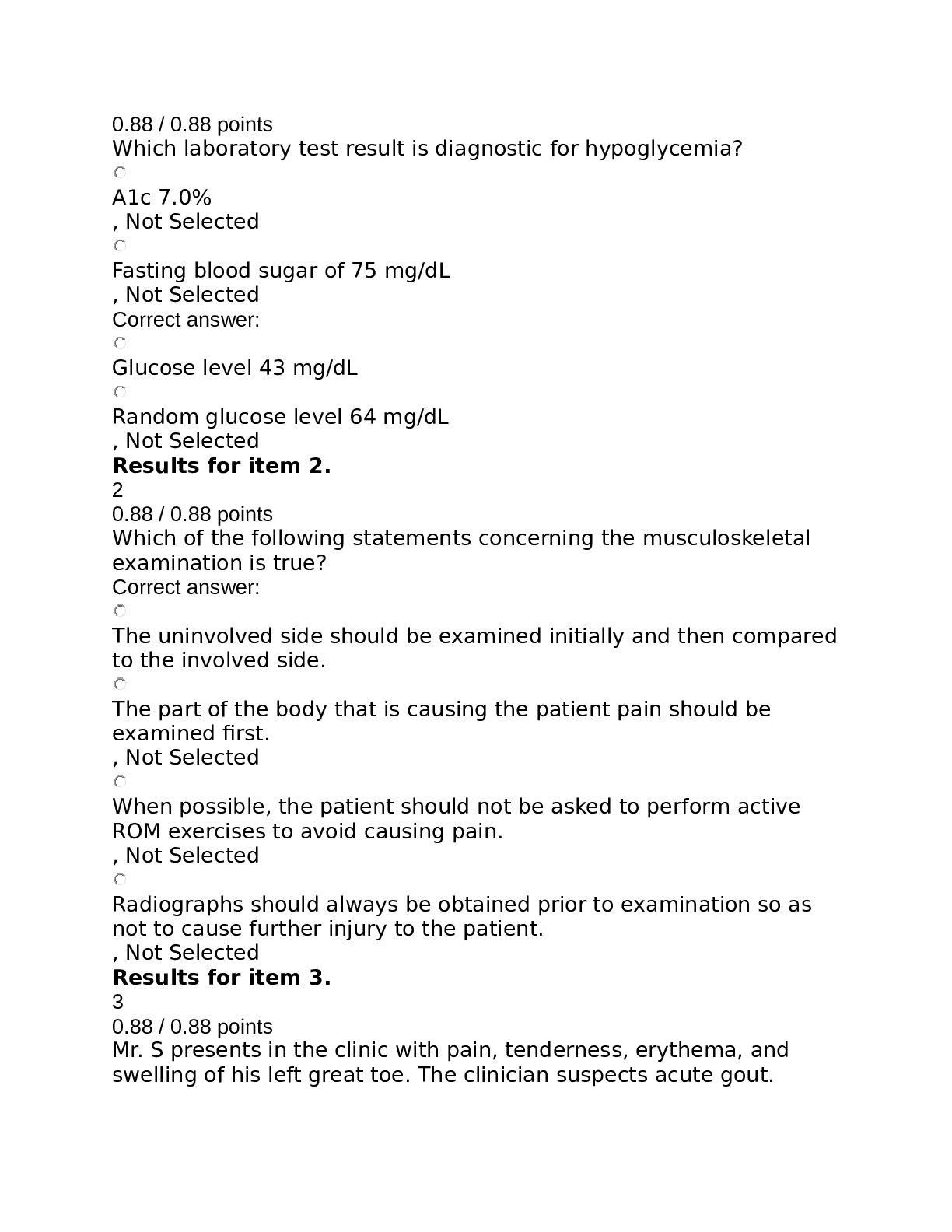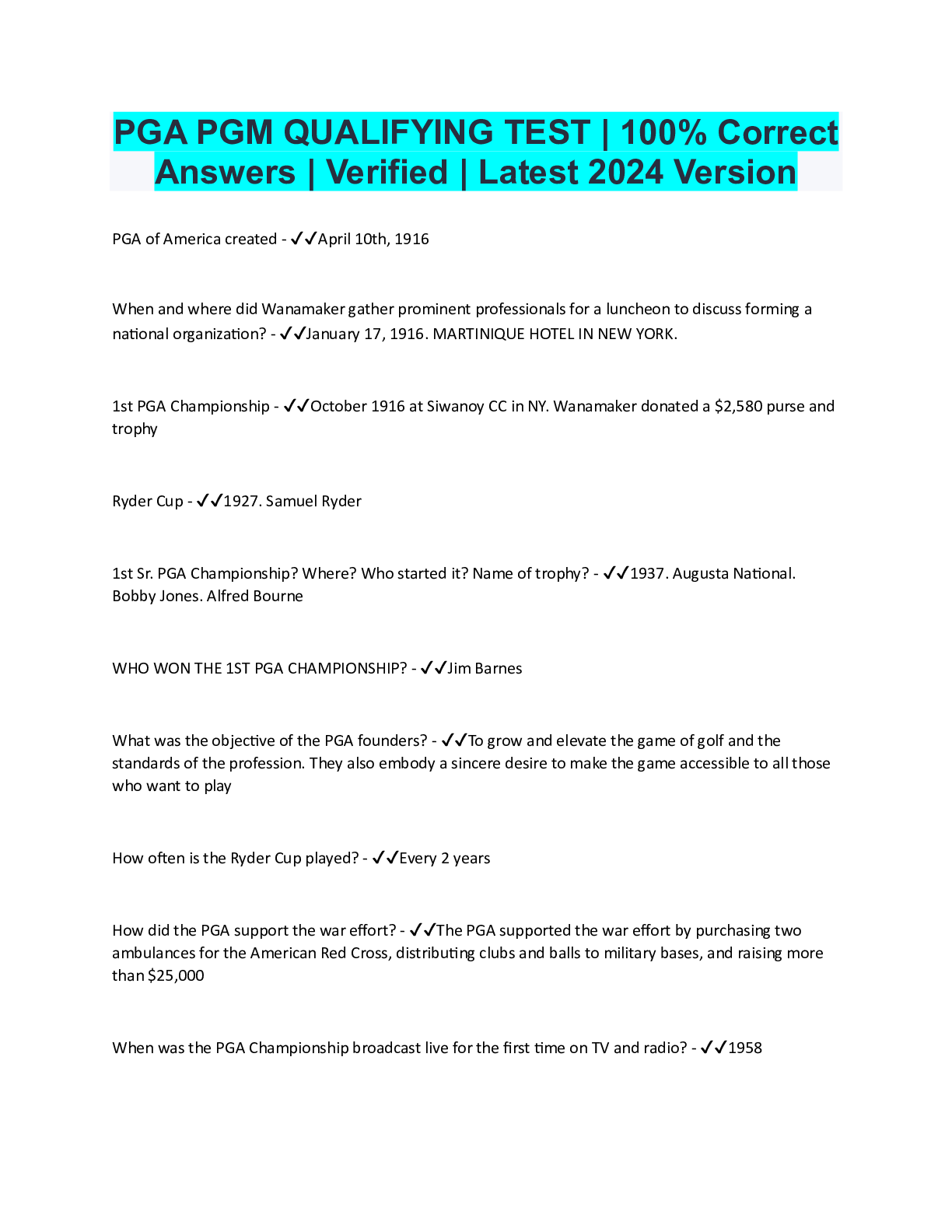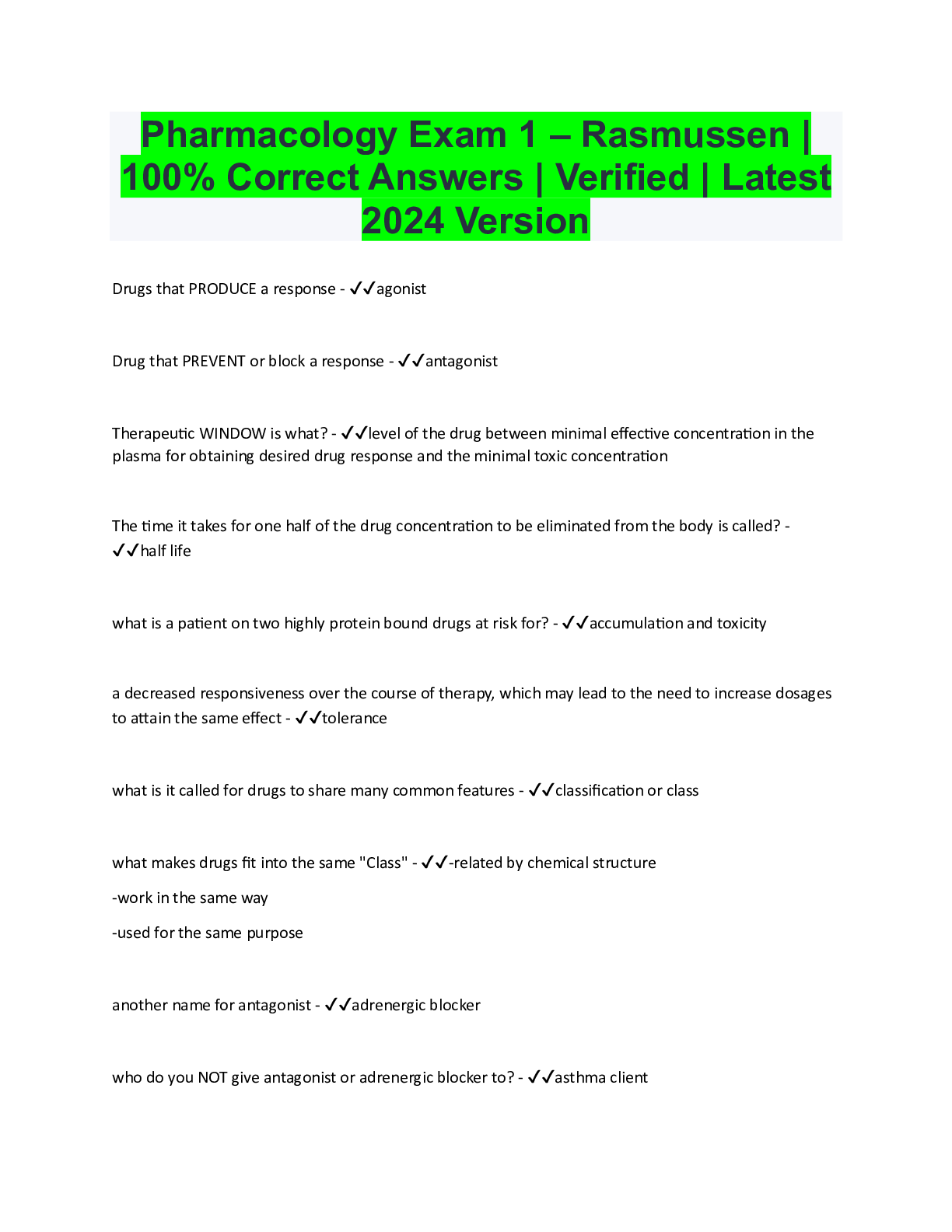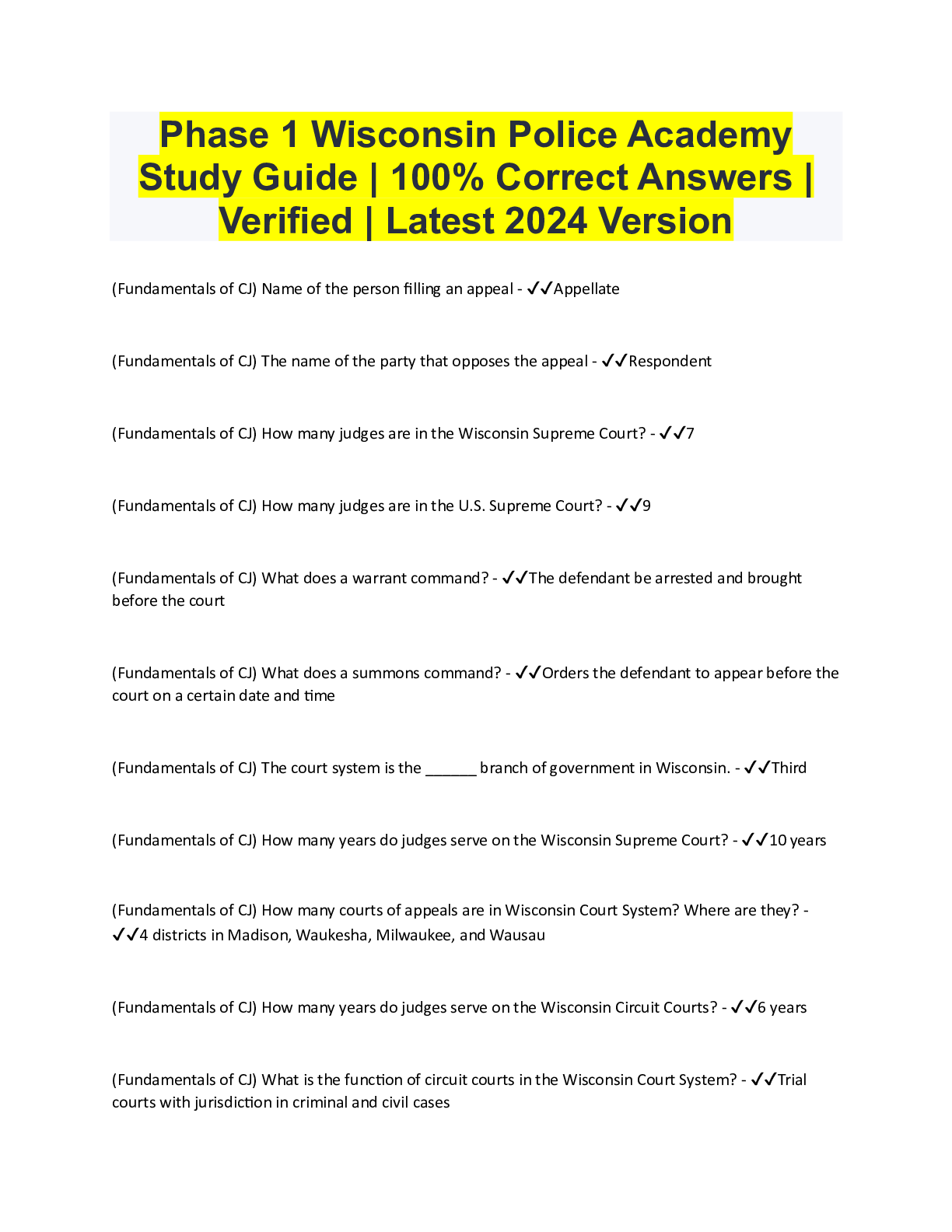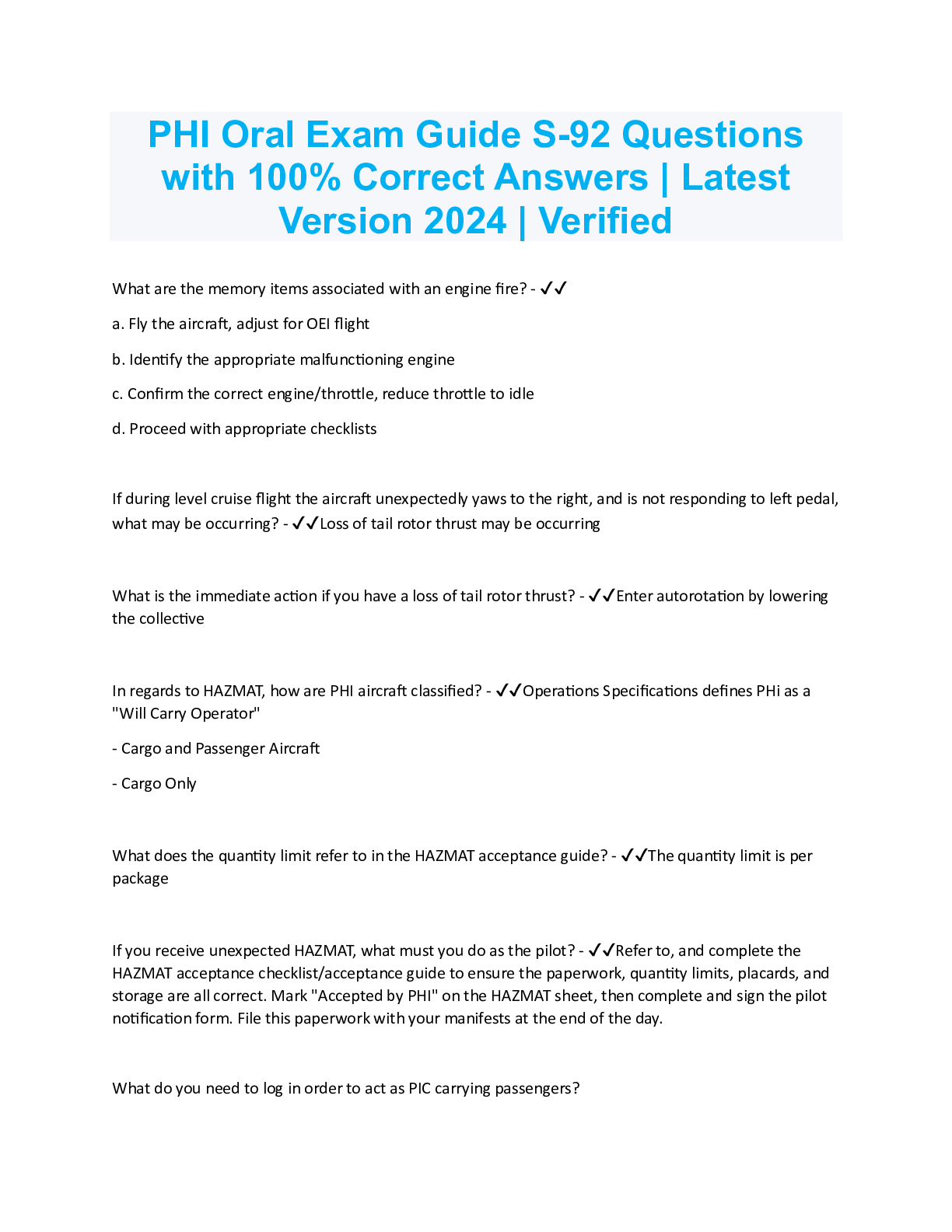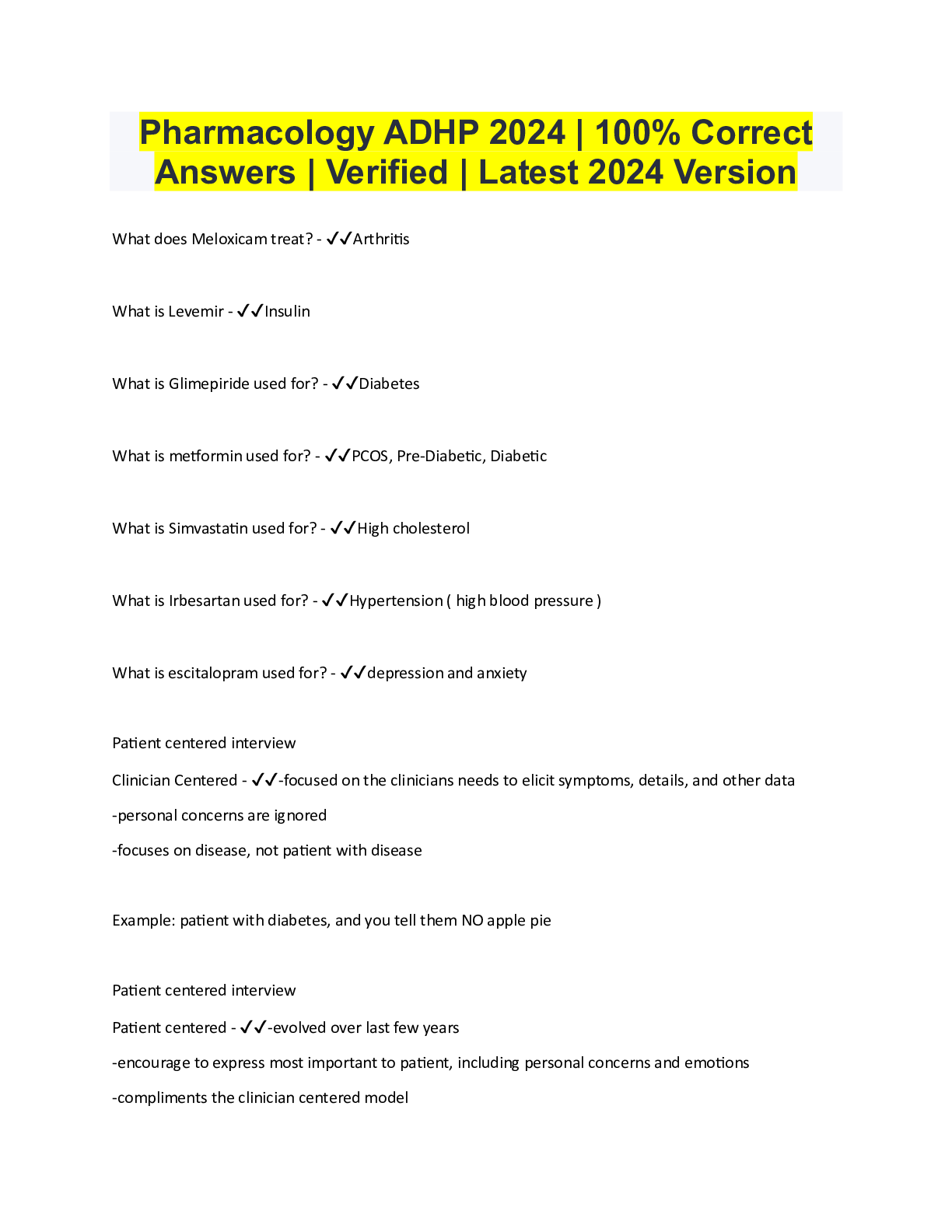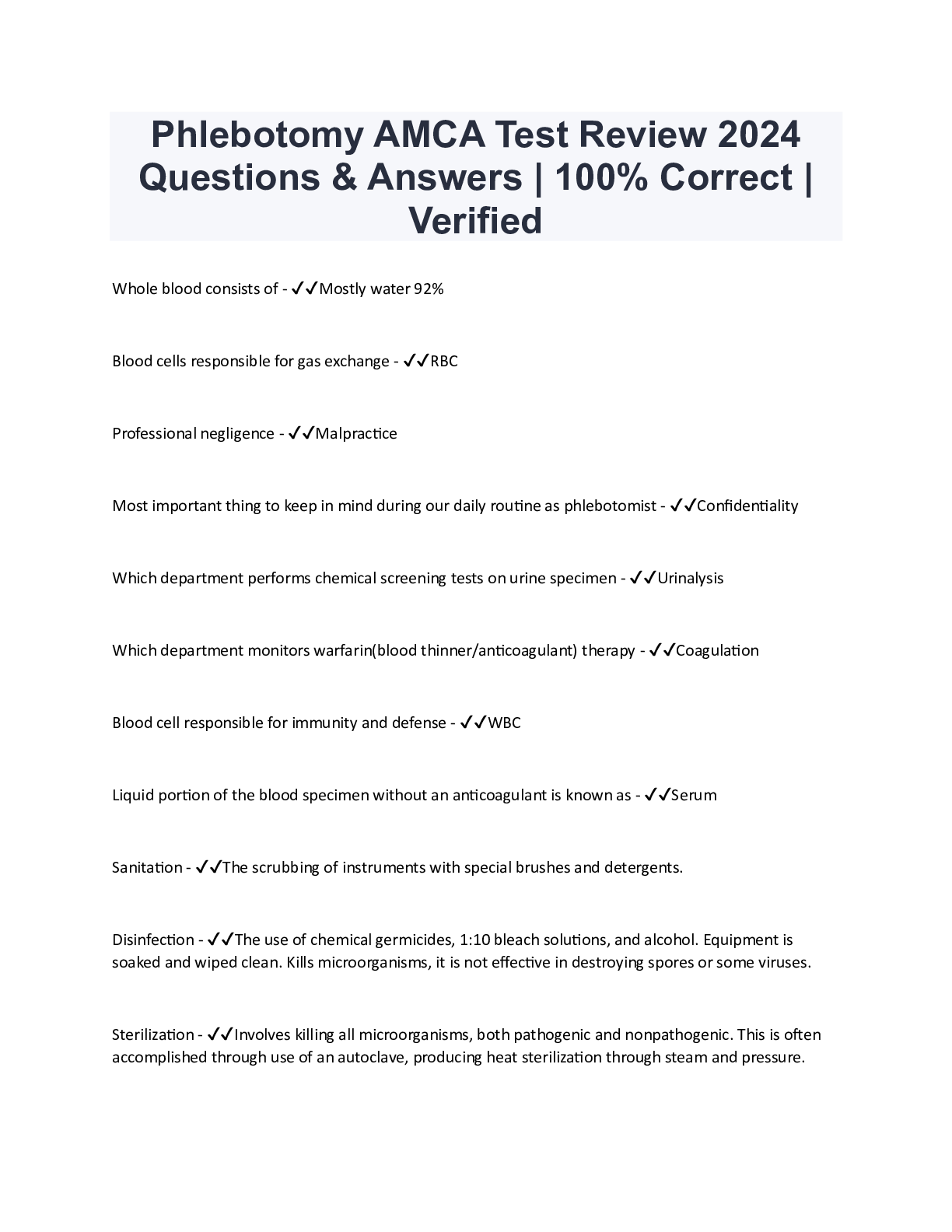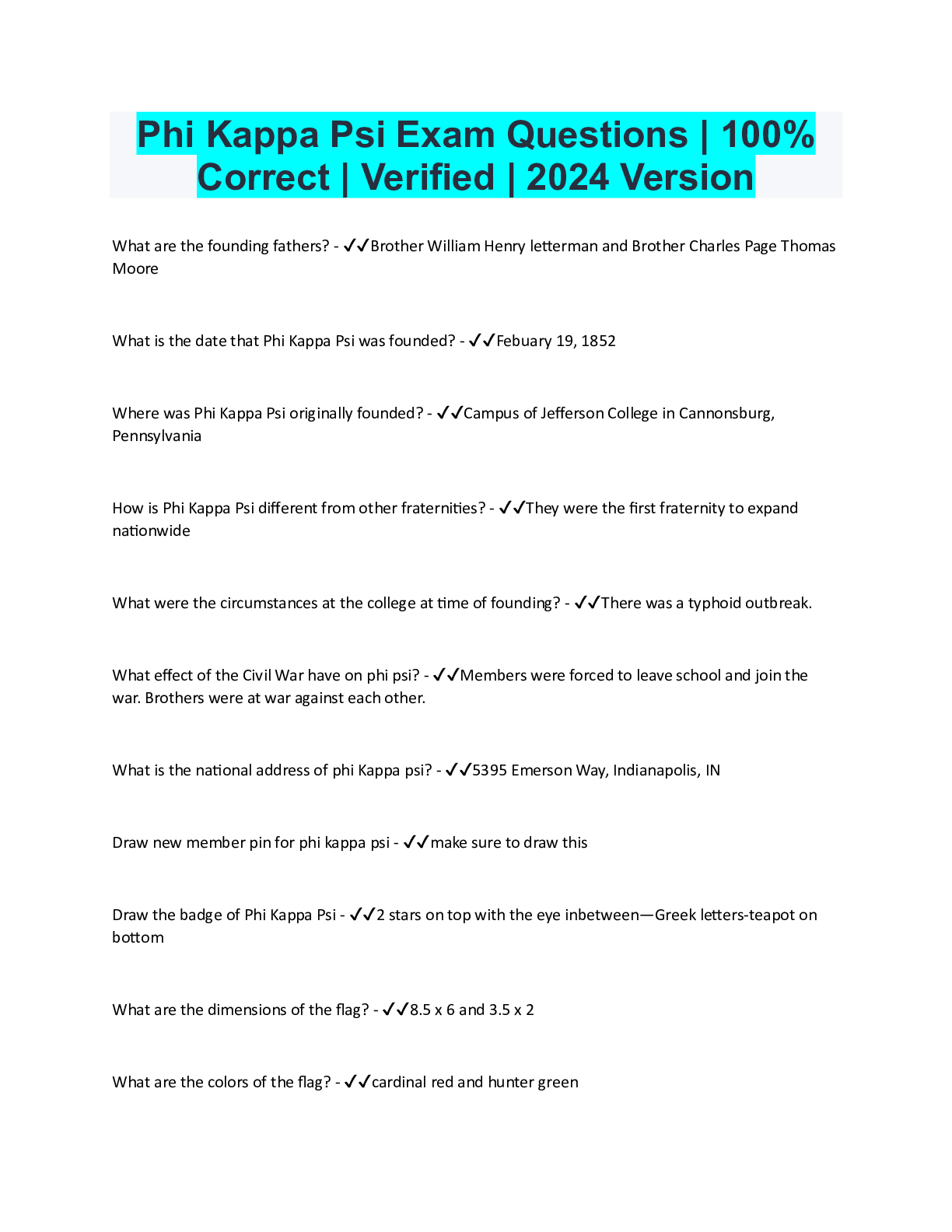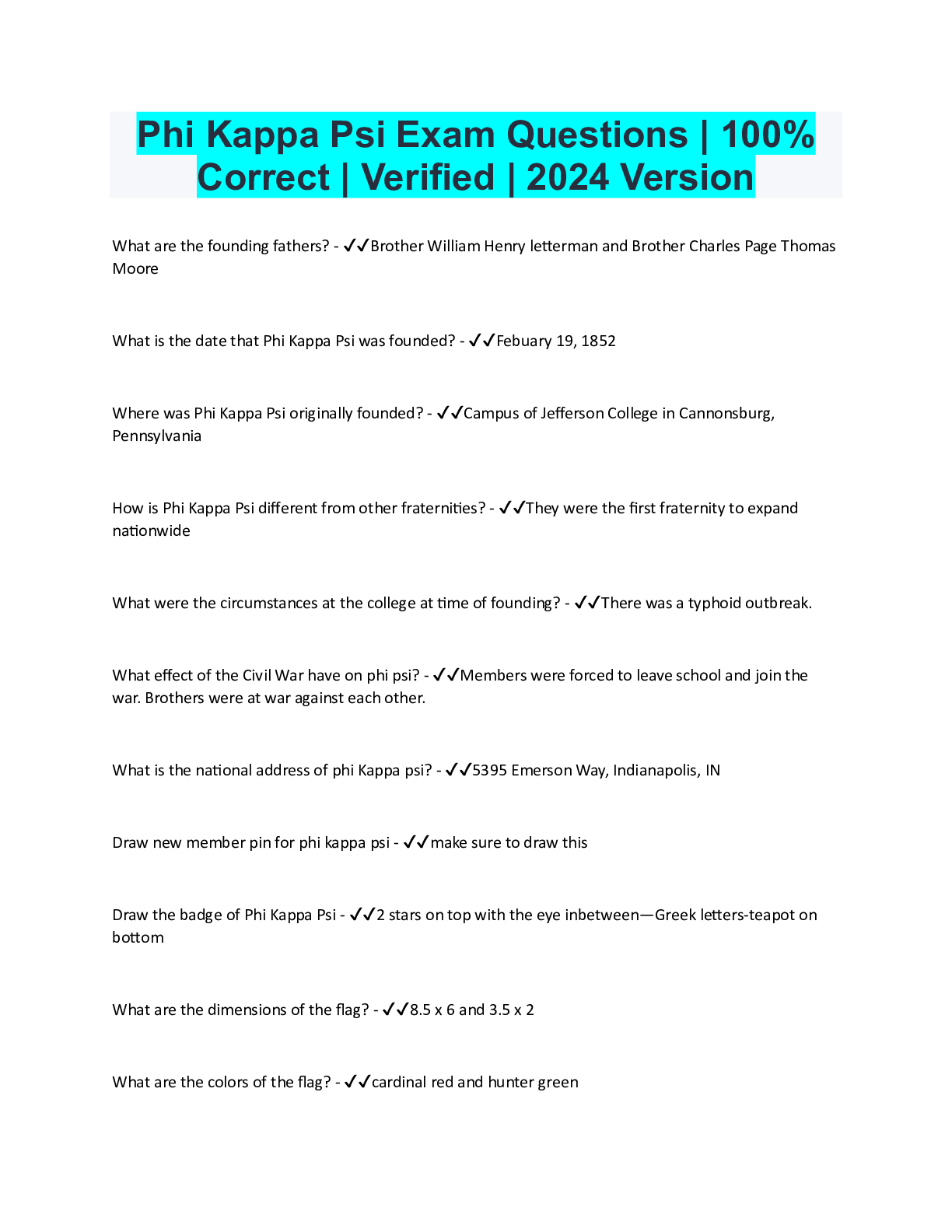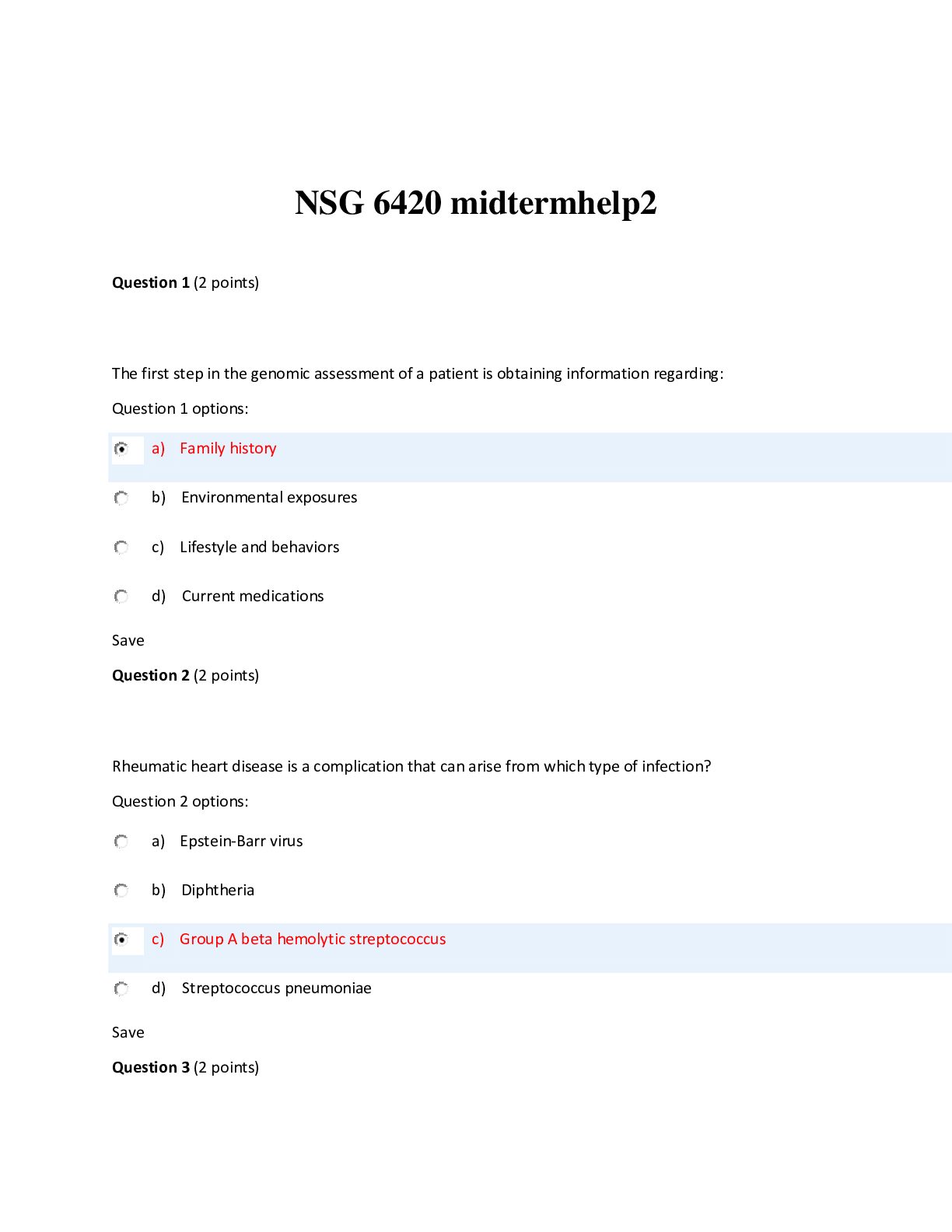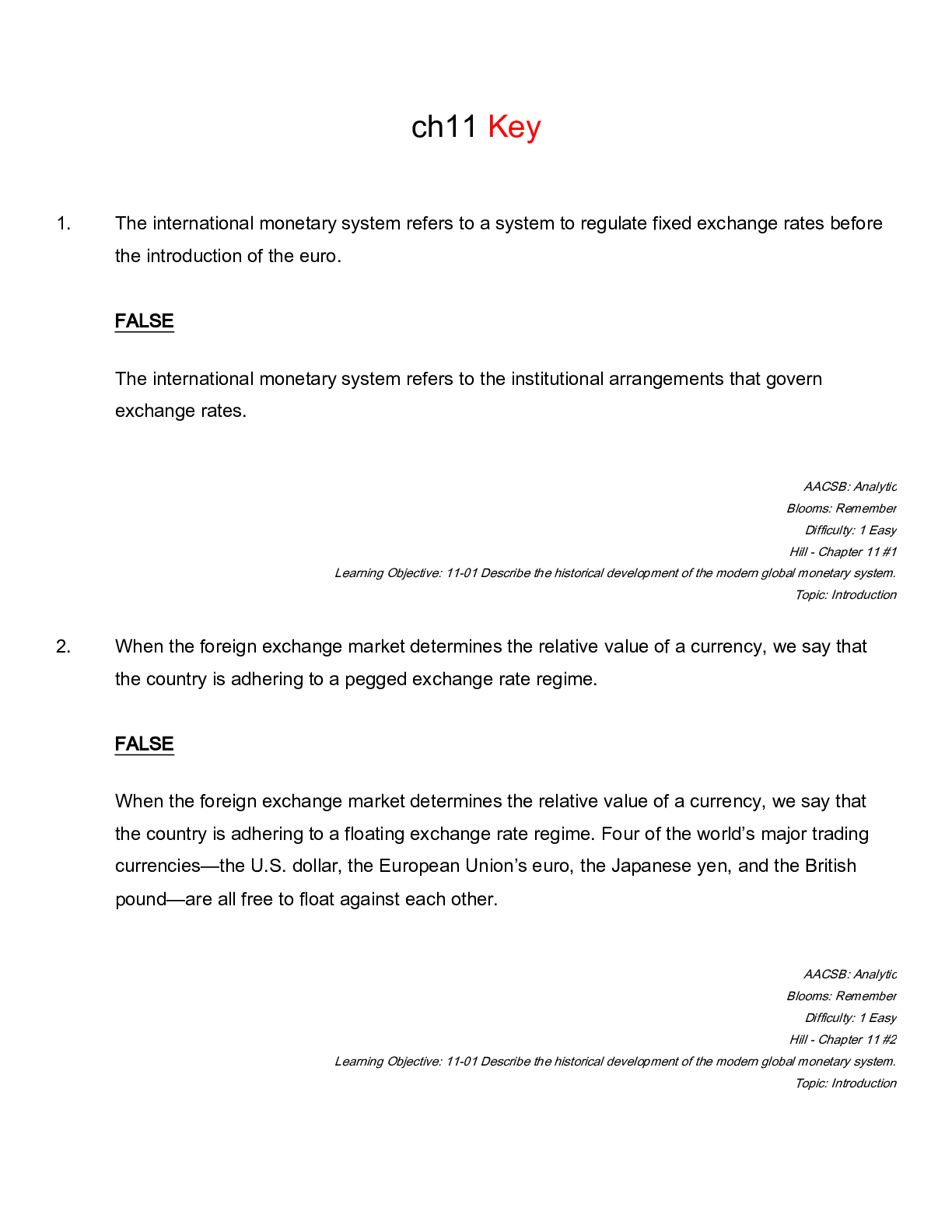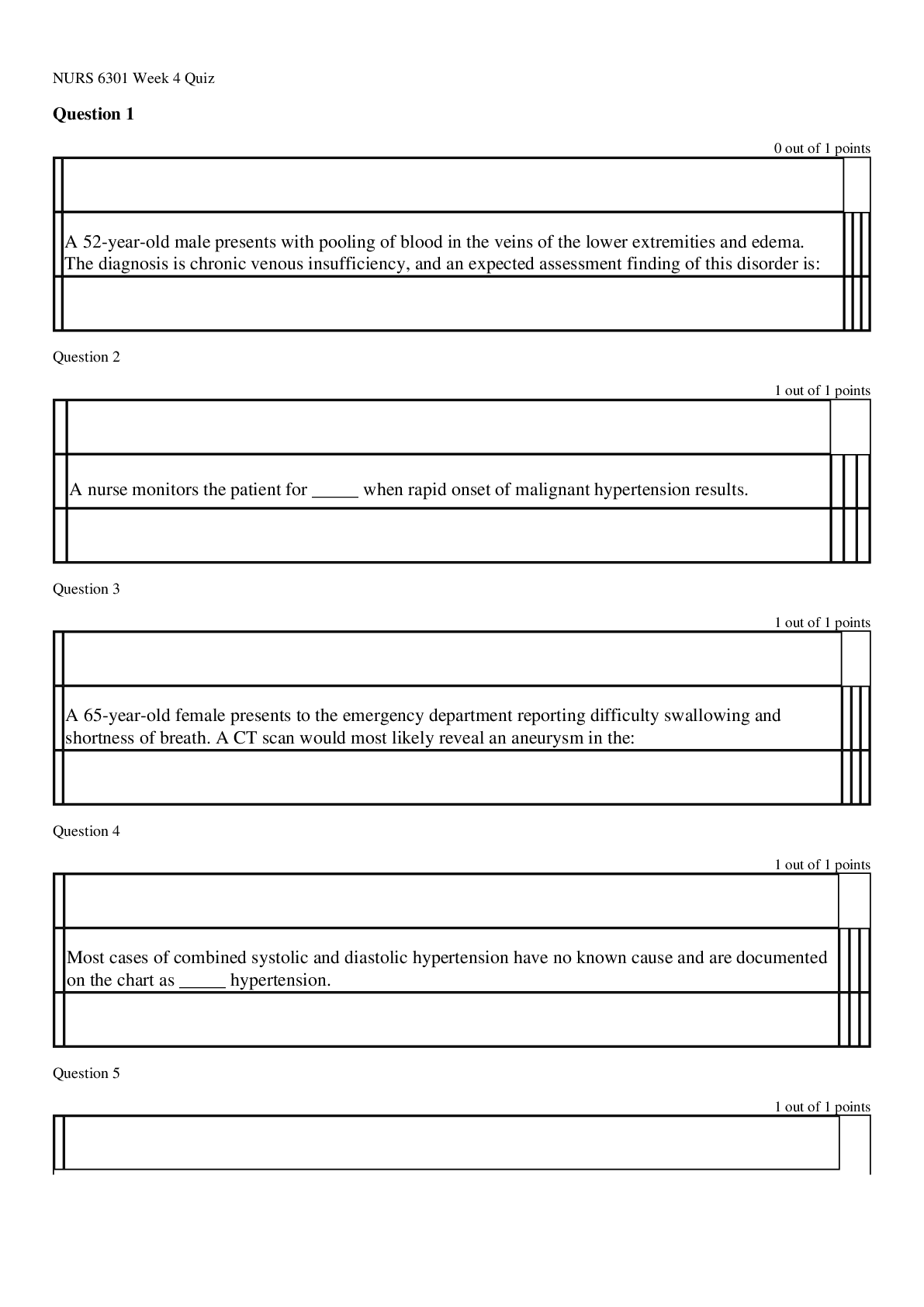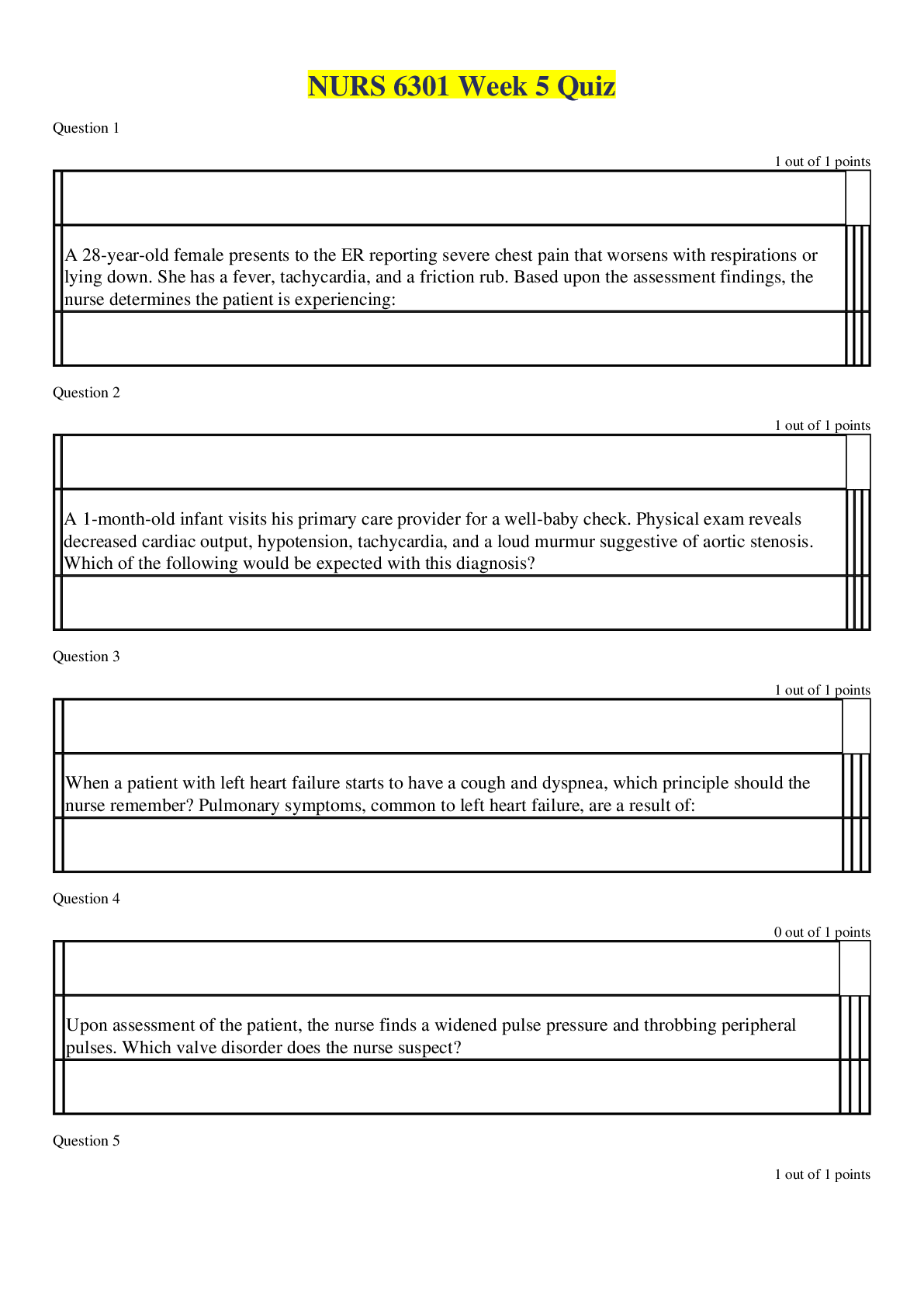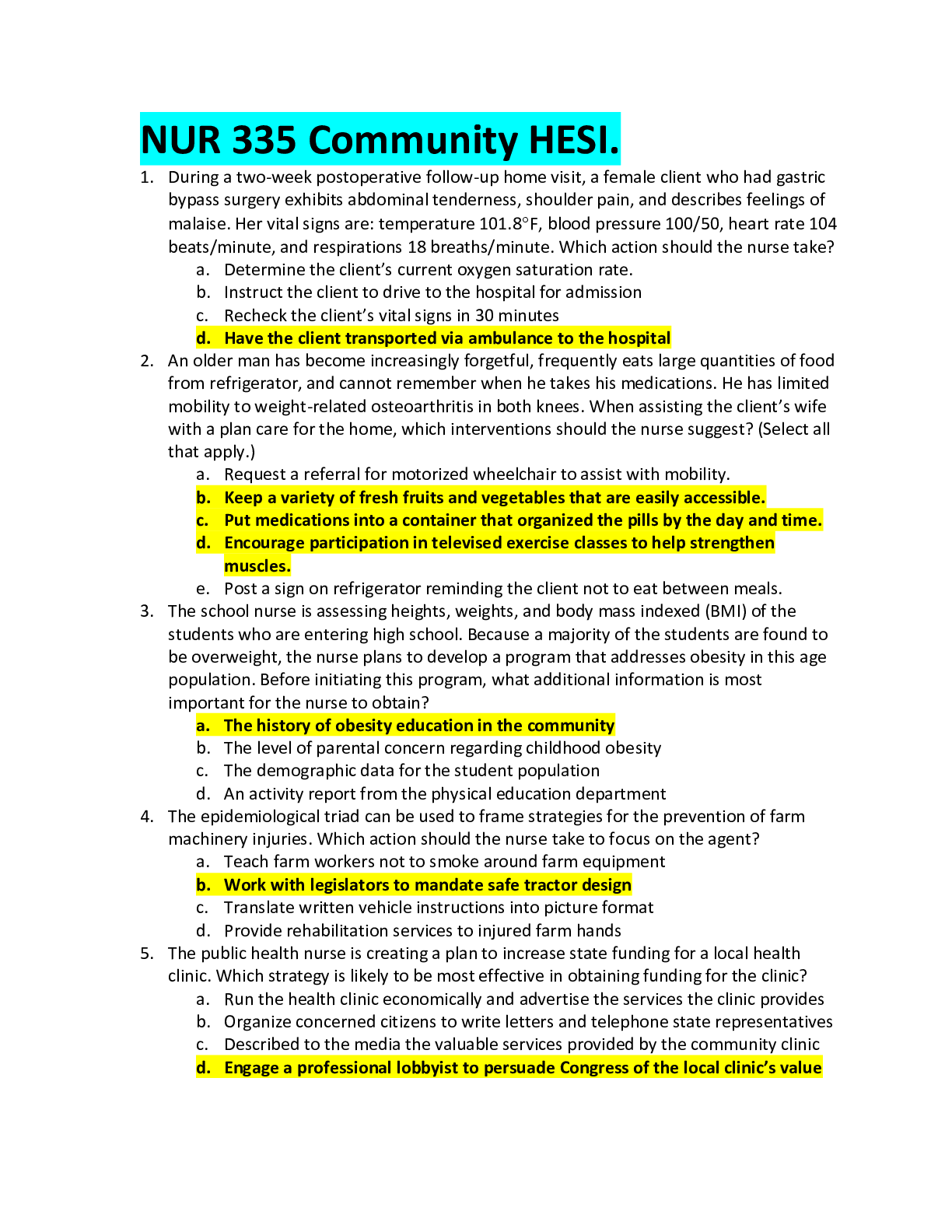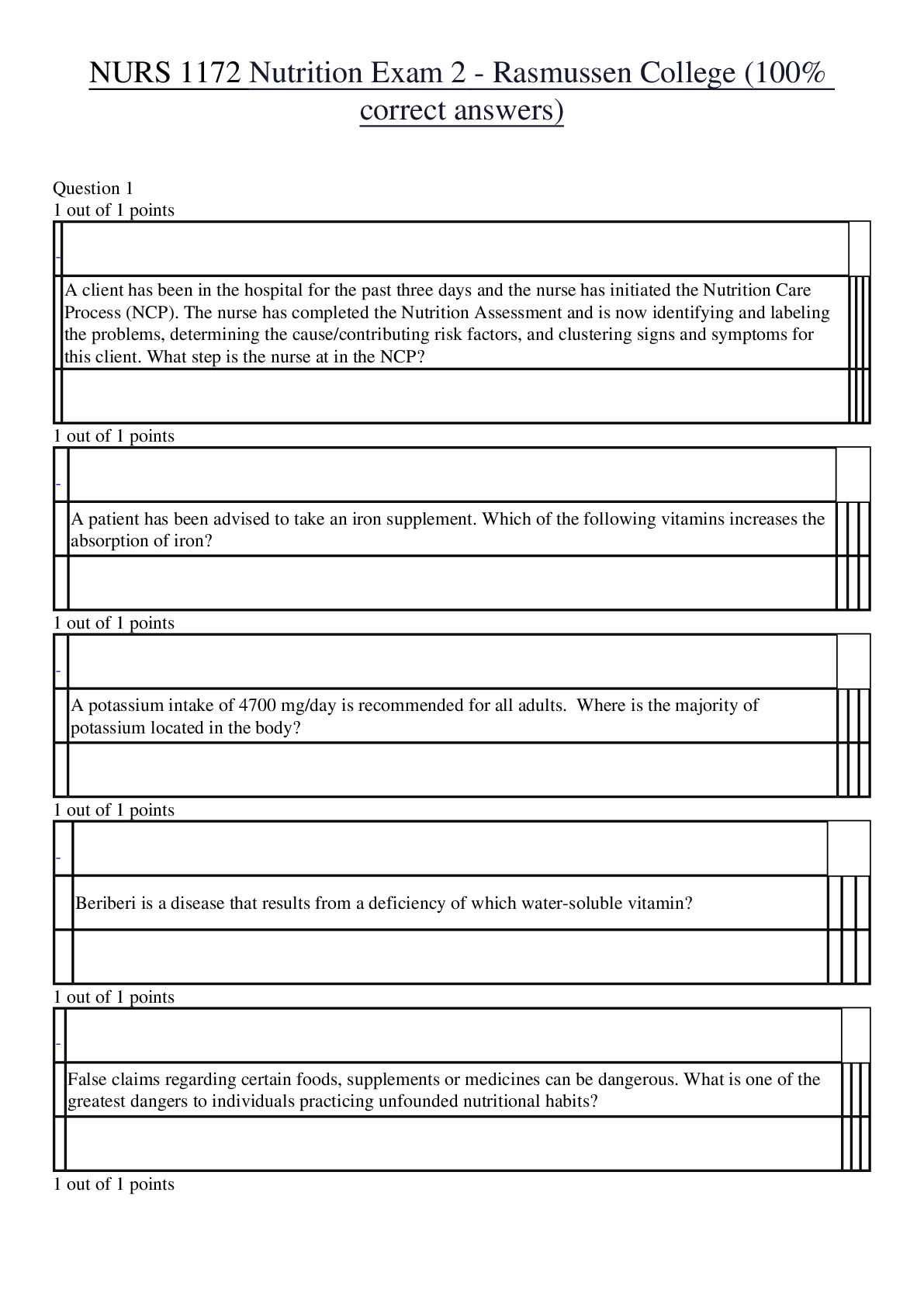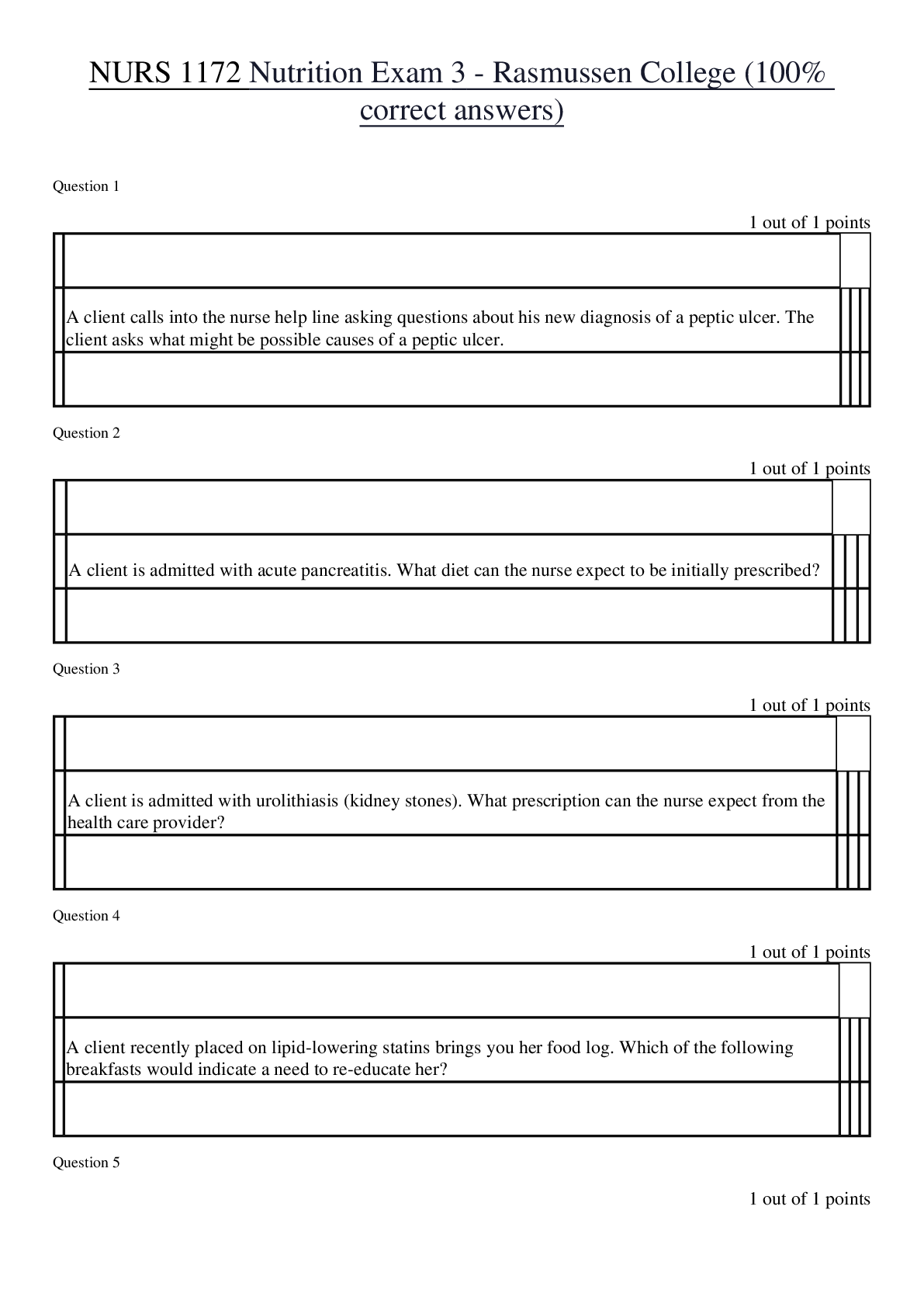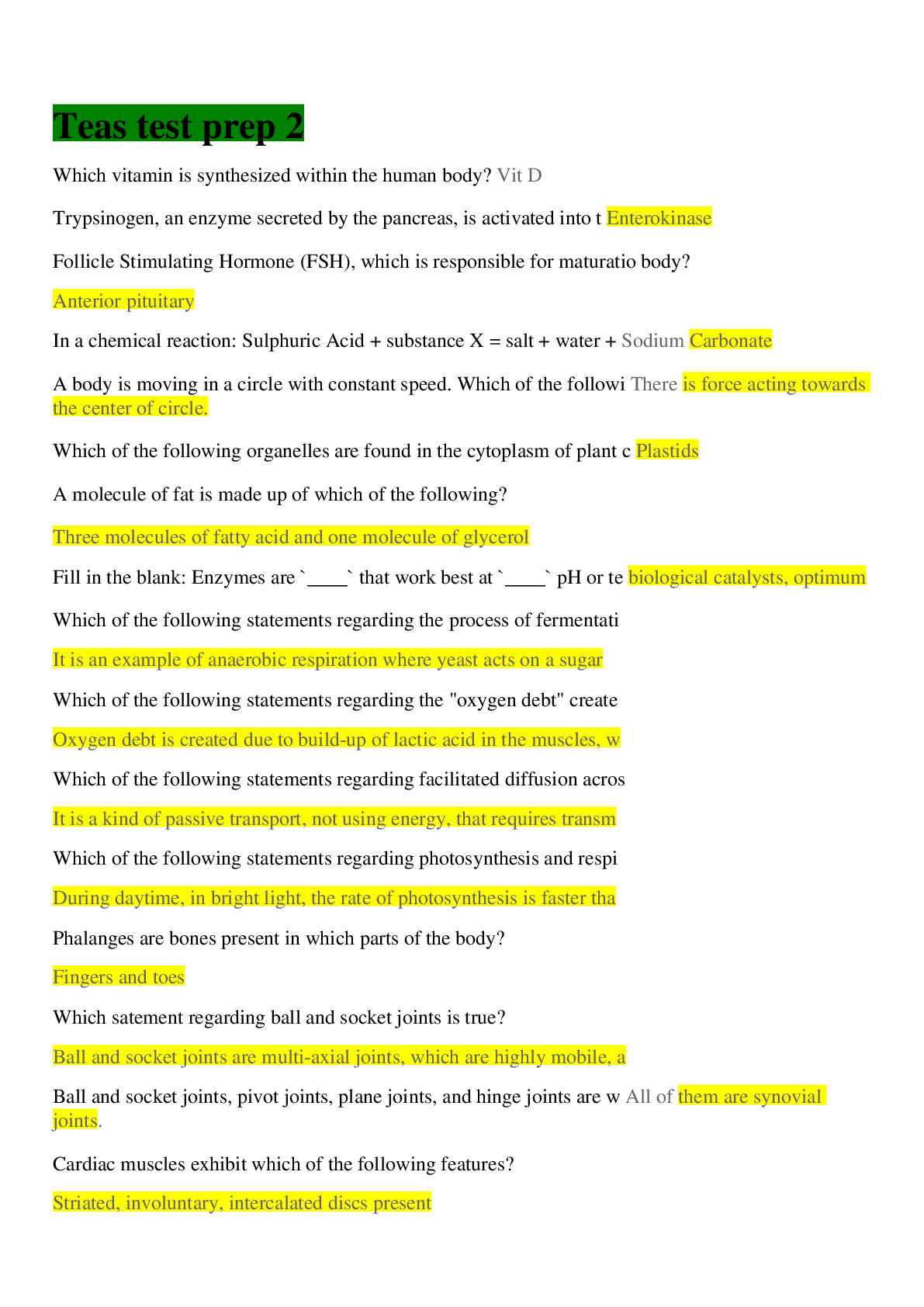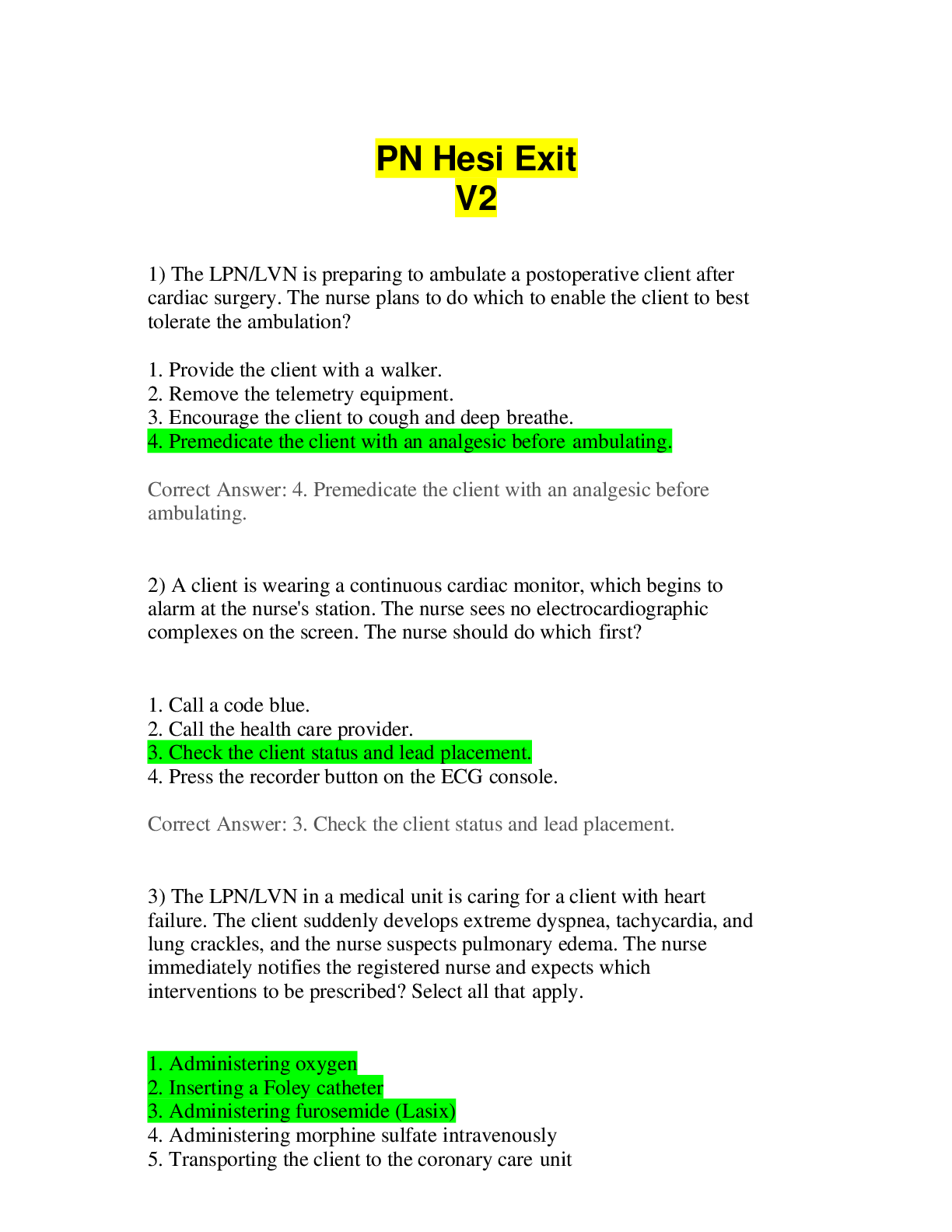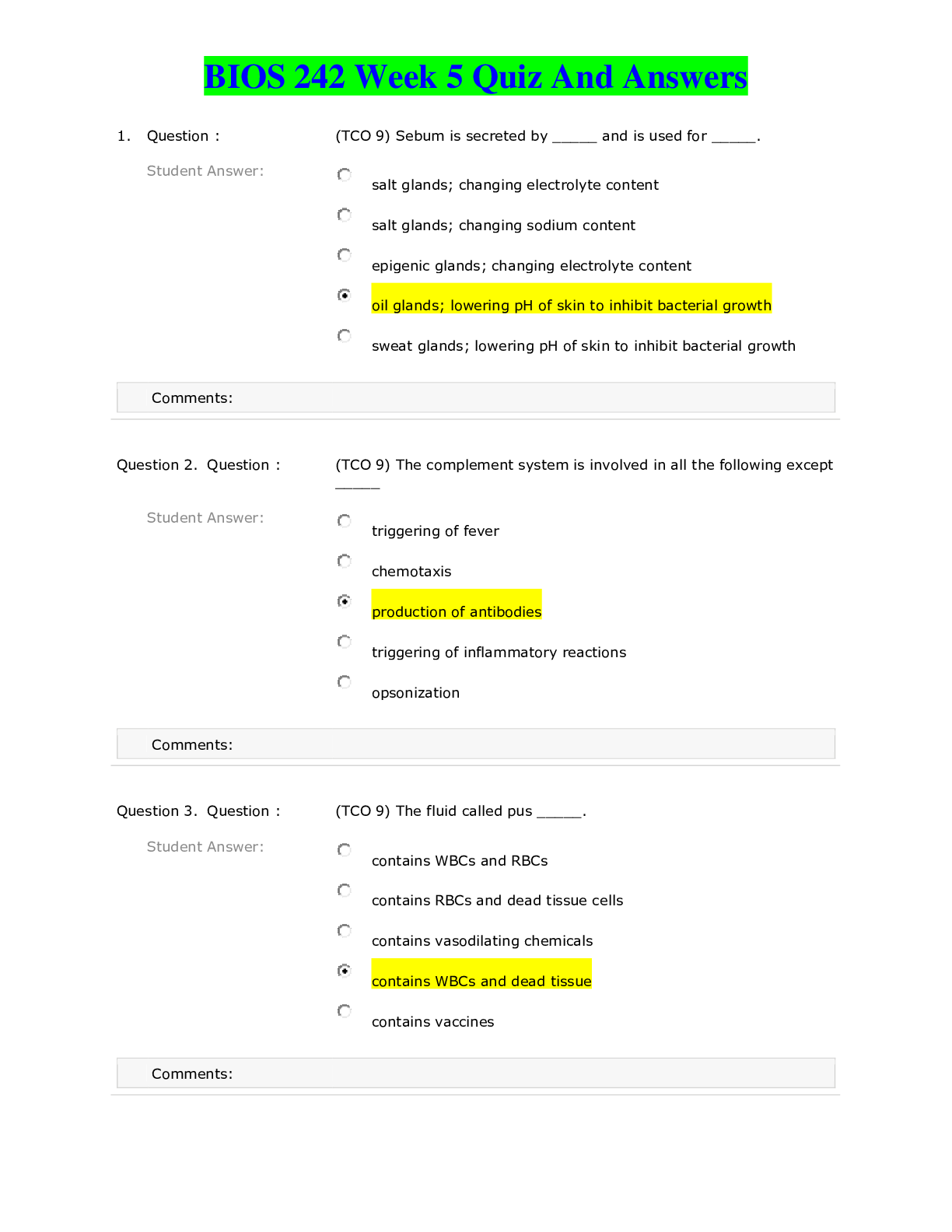Health Care > EXAM > PALS Final Exam Review | 100% Correct Answers | Verified | Latest 2024 Version (All)
PALS Final Exam Review | 100% Correct Answers | Verified | Latest 2024 Version
Document Content and Description Below
Mikey, a 2-year-old boy, is sitting upright on a hospital bed in room 3 of your emergency department. Your initial impression from the door does not raise immediate concern. On your entry to the room... , you are able to look at Mikey more closely and notice on inhalation his nostrils are flaring. This is a sign of: - ✔✔Respiratory distress The proper site for a peripheral pulse assessment in the infant patient is: - ✔✔brachial You are called to the scene of a 3-year-old patient who was found anxious, *cyanotic* and lethargic after a fall down a flight of stairs. On assessing the patient, you find vital signs with a respiratory rate of 30, regular pulse rate of 130, regular capillary refill time of 4 seconds, and a blood pressure of 102/61. What kind of shock is the patient experiencing? - ✔✔compensate shock? A mnemonic that aids in performing a primary assessment is: - ✔✔ABCDE A consideration of treatment for a pediatric patient with acute fulminant myocarditis who is in cardiac arrest or at a high risk of cardiac arrest is: - ✔✔Extracorporeal membrane oxygenation (ECMO) Which of the following is the correct meaning for one of the individual letters in the AVPU scale? - ✔✔Alert - The child is alert and awake and responds to normal stimuli based upon age and environment The recommended route of vascular access on a hypotensive pediatric patient is: - ✔✔central IV You are called to the bedside of a 12-year-old male patient who was admitted after a week of persistent vomiting, diarrhea and limiting oral intake of both solids and liquids. The patient's airway is patent, ventilatory rate is within normal limits and the patient's circulatory status presents with tachycardia, a blood pressure of 70/40 and a capillary refill time of 5 seconds. The patient is speaking incoherently. The patient has no history of cardiac problems or congenital defects. The appropriate fluid administration dose for this patient is: - ✔✔20 ml/kg 0.9% NaCl over 10 minutes [Show More]
Last updated: 10 months ago
Preview 4 out of 11 pages

Loading document previews ...
Buy this document to get the full access instantly
Instant Download Access after purchase
Buy NowInstant download
We Accept:

Reviews( 0 )
$5.00
Can't find what you want? Try our AI powered Search
Document information
Connected school, study & course
About the document
Uploaded On
Sep 19, 2024
Number of pages
11
Written in
Additional information
This document has been written for:
Uploaded
Sep 19, 2024
Downloads
0
Views
18

